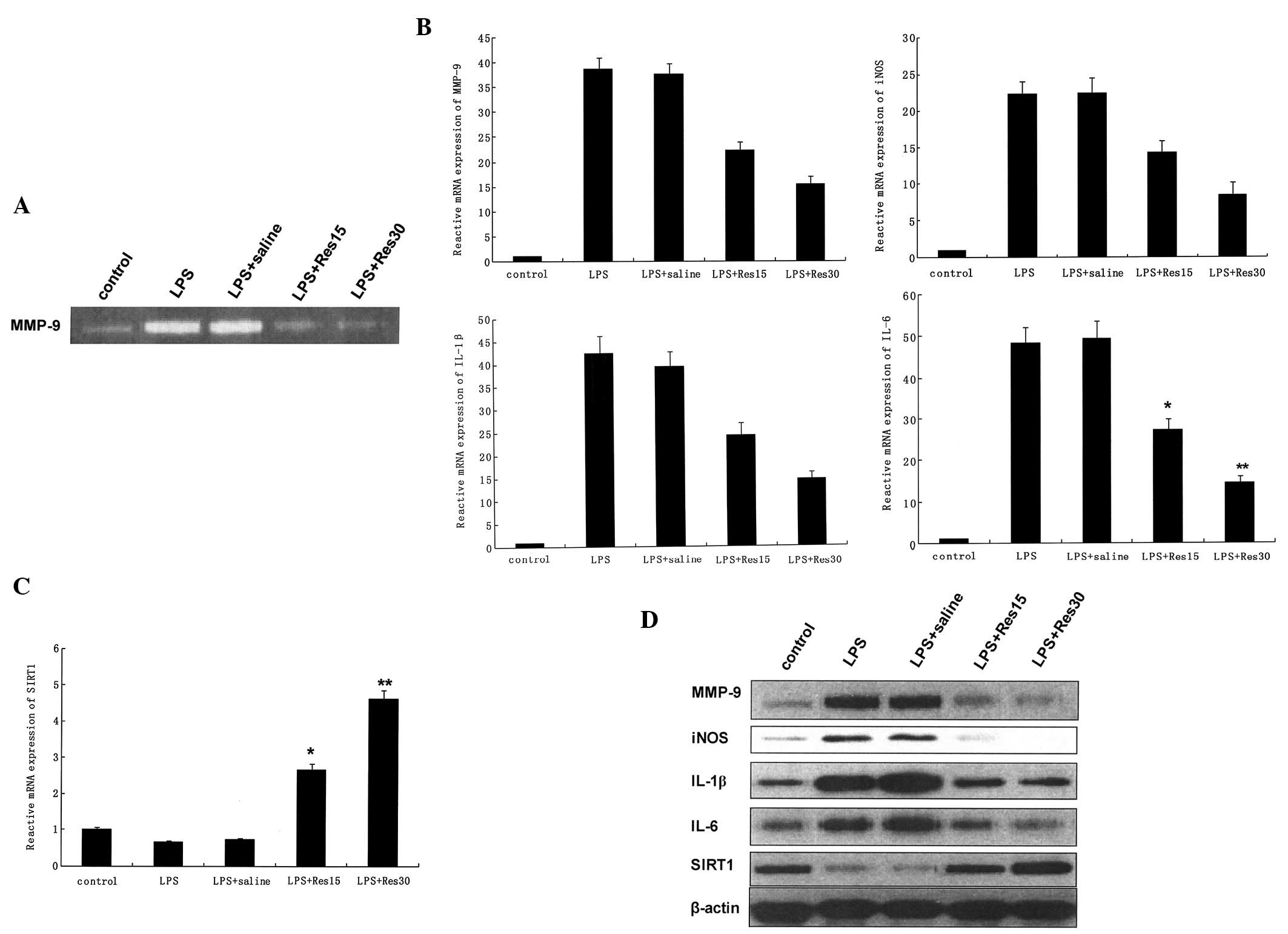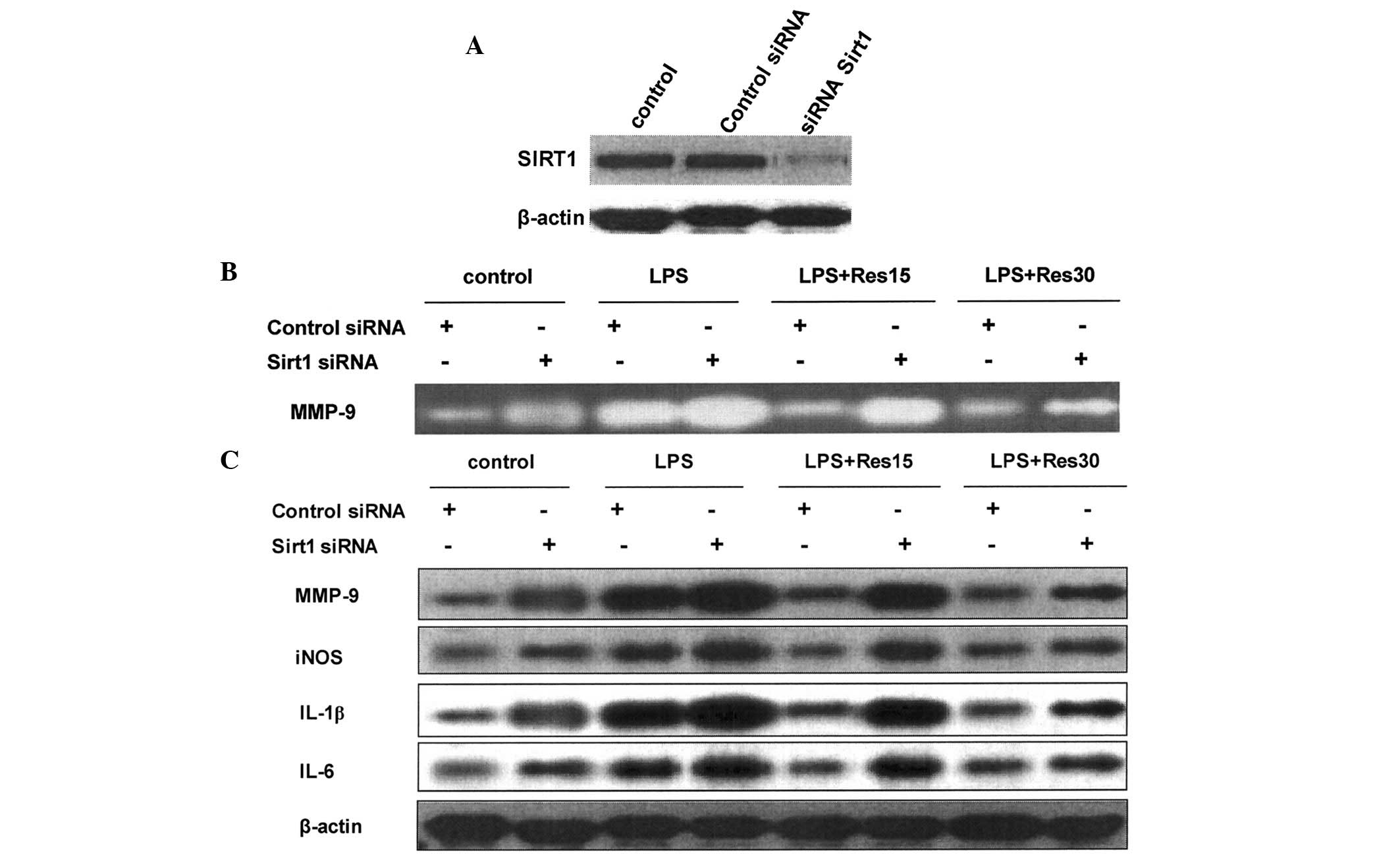|
1
|
Lee WL and Slutsky AS: Sepsis and
endothelial permeability. N Engl J Med. 363:689–691. 2010.
View Article : Google Scholar : PubMed/NCBI
|
|
2
|
Hotchkiss RS and Karl IE: The
pathophysiology and treatment of sepsis. N Engl J Med. 348:138–150.
2003. View Article : Google Scholar : PubMed/NCBI
|
|
3
|
Angus DC, Linde-Zwirble WT, Lidicker J, et
al: Epidemiology of severe sepsis in the United States: analysis of
incidence, outcome and associated costs of care. Crit Care Med.
29:1303–1310. 2001. View Article : Google Scholar : PubMed/NCBI
|
|
4
|
Marshall JC, Vincent JL, Guyatt G, et al:
Outcome measures for clinical research in sepsis: a report of the
2nd Cambridge Colloquium of the International Sepsis Forum. Crit
Care Med. 33:1708–1716. 2005. View Article : Google Scholar : PubMed/NCBI
|
|
5
|
Herridge MS, Cheung AM, Tansey CM, et al:
One-year outcomes in survivors of the acute respiratory distress
syndrome. N Engl J Med. 348:683–693. 2003.PubMed/NCBI
|
|
6
|
Chung YJ, Jarvis B and Pestka J:
Modulation of lipopolysaccharide-induced proinflammatory cytokine
production by satratoxins and other macrocyclic trichothecenes in
the murine macrophage. J Toxicol Environ Health A. 66:379–391.
2003. View Article : Google Scholar
|
|
7
|
Brandolini L, Asti C, Ruggieri V, et al:
Lipopolysaccharide-induced lung injury in mice. II Evaluation of
functional damage in isolated parenchyma strips. Pulm Pharmacol
Ther. 13:71–78. 2000. View Article : Google Scholar : PubMed/NCBI
|
|
8
|
Bucher M and Taeger K: Endothelin-receptor
gene-expression in rat endotoxemia. Intensive Care Med. 28:642–647.
2002. View Article : Google Scholar : PubMed/NCBI
|
|
9
|
Emery DA, Nagaraja KV, Sivanandan V, et
al: Endotoxin lipopolysaccharide from Escherichia coli and
its effects on the phagocytic function of systemic and pulmonary
macrophages in turkeys. Avian Dis. 35:901–909. 1991.
|
|
10
|
Esbenshade AM, Newman JH, Lams PM, et al:
Respiratory failure after endotoxin infusion in sheep: lung
mechanics and lung fluid balance. J Appl Physiol. 53:967–976.
1982.PubMed/NCBI
|
|
11
|
Müller G, Steinbach G, Berndt A and Köhler
H: Effects of various applications of lipopolysaccharides on blood
parameters of pigs. J Vet Med B Infect Dis Vet Public Health.
49:429–437. 2002.PubMed/NCBI
|
|
12
|
Lentsch AB, Czermak BJ, Bless NM, et al:
Essential role of alveolar macrophages in intrapulmonary activation
of NF-kappaB. Am J Respir Cell Mol Biol. 20:692–698. 1999.
View Article : Google Scholar : PubMed/NCBI
|
|
13
|
Lentsch AB and Ward PA: Regulation of
experimental lung inflammation. Respir Physiol. 128:17–22. 2001.
View Article : Google Scholar : PubMed/NCBI
|
|
14
|
Rojas M, Woods CR, Mora AL, et al:
Endotoxin-induced lung injury in mice: structural, functional and
biochemical responses. Am J Physiol Lung Cell Mol Physiol.
288:L333–L341. 2005. View Article : Google Scholar : PubMed/NCBI
|
|
15
|
Howitz KT, Bitterman KJ, Cohen HY, et al:
Small molecule activators of sirtuins extend Saccharomyces
cerevisiae lifespan. Nature. 425:191–196. 2003. View Article : Google Scholar : PubMed/NCBI
|
|
16
|
Kojima K, Ohhashi R, Fujita Y, et al: A
role for SIRT1 in cell growth and chemoresistance in prostate
cancer PC3 and DU145 cells. Biochem Biophys Res Commun.
373:423–428. 2008. View Article : Google Scholar : PubMed/NCBI
|
|
17
|
Ford J, Jiang M and Milner J:
Cancer-specific functions of SIRT1 enable human epithelial cancer
cell growth and survival. Cancer Res. 65:10457–10463. 2005.
View Article : Google Scholar : PubMed/NCBI
|
|
18
|
Yang SR, Wright J, Bauter M, et al:
Sirtuin regulates cigarette smoke-induced proinflammatory mediator
release via RelA/p65 NF-kappaB in macrophages in vitro and
in rat lungs in vivo: implications for chronic inflammation
and aging. Am J Physiol Lung Cell Mol Physiol. 292:L567–L576. 2007.
View Article : Google Scholar : PubMed/NCBI
|
|
19
|
Yeung F, Hoberg JE, Ramsey CS, et al:
Modulation of NF-kappaB-dependent transcription and cell survival
by the SIRT1 deacetylase. EMBO J. 23:2369–2380. 2004. View Article : Google Scholar : PubMed/NCBI
|
|
20
|
Rajendrasozhan S, Yang SR, Kinnula VL and
Rahman I: SIRT1, an antiinflammatory and antiaging protein, is
decreased in lungs of patients with chronic obstructive pulmonary
disease. Am J Respir Crit Care Med. 177:861–870. 2008. View Article : Google Scholar : PubMed/NCBI
|
|
21
|
Singh UP, Singh NP, Singh B, et al:
Resveratrol (trans-3,5,4′-trihydroxystilbene) induces silent mating
type information regulation-1 and down-regulates nuclear
transcription factor-kappaB activation to abrogate dextran sulfate
sodium-induced colitis. J Pharmacol Exp Ther. 332:829–839.
2010.
|
|
22
|
Borra MT, Smith BC and Denu JM: Mechanism
of human SIRT1 activation by resveratrol. J Biol Chem.
280:17187–17195. 2005. View Article : Google Scholar : PubMed/NCBI
|
|
23
|
Bishayee A, Waghray A, Barnes KF, et al:
Suppression of the inflammatory cascade is implicated in
resveratrol chemoprevention of experimental hepatocarcinogenesis.
Pharm Res. 27:1080–1091. 2010. View Article : Google Scholar : PubMed/NCBI
|
|
24
|
Knobloch J, Sibbing B, Jungck D, et al:
Resveratrol impairs the release of steroid-resistant inflammatory
cytokines from human airway smooth muscle cells in chronic
obstructive pulmonary disease. J Pharmacol Exp Ther. 335:788–798.
2010. View Article : Google Scholar
|
|
25
|
Chung EY, Kim BH, Hong JT, et al:
Resveratrol downregulates interferon-gamma-inducible inflammatory
genes in macrophages: molecular mechanism via decreased STAT-1
activation. J Nutr Biochem. 22:902–909. 2011. View Article : Google Scholar
|
|
26
|
Csaki C, Keshishzadeh N, Fischer K and
Shakibaei M: Regulation of inflammation signalling by resveratrol
in human chondrocytes in vitro. Biochem Pharmacol.
75:677–687. 2008. View Article : Google Scholar : PubMed/NCBI
|
|
27
|
Donnelly LE, Newton R, Kennedy GE, et al:
Anti-inflammatory effects of resveratrol in lung epithelial cells:
molecular mechanisms. Am J Physiol Lung Cell Mol Physiol.
287:L774–L783. 2004. View Article : Google Scholar : PubMed/NCBI
|
|
28
|
Elmali N, Baysal O, Harma A, et al:
Effects of resveratrol in inflammatory arthritis. Inflammation.
30:1–6. 2007. View Article : Google Scholar : PubMed/NCBI
|
|
29
|
Olholm J, Paulsen SK, Cullberg KB, et al:
Antiinflammatory effect of resveratrol on adipokine expression and
secretion in human adipose tissue explants. Int J Obes (Lond).
34:1546–1553. 2010. View Article : Google Scholar : PubMed/NCBI
|
|
30
|
Kim DH, Longo M, Han Y, et al: Interferon
induction by siRNAs and ssRNAs synthesised by phage polymerase. Nat
Biotechnol. 22:321–325. 2004. View
Article : Google Scholar : PubMed/NCBI
|
|
31
|
Peterson BT, Brooks JA and Zack AG: Use of
microwave oven for determination of postmortem water volume of
lungs. J Appl Physiol. 52:1661–1663. 1982.PubMed/NCBI
|
|
32
|
Riva DR, Oliveira MB, Rzezinski AF, et al:
Recruitment maneuver in pulmonary and extrapulmonary experimental
acute lung injury. Crit Care Med. 36:1900–1908. 2008. View Article : Google Scholar : PubMed/NCBI
|
|
33
|
Pássaro CP, Silva PL, Rzezinski AF, et al:
Pulmonary lesion induced by low and high positive end-expiratory
pressure levels during protective ventilation in experimental acute
lung injury. Crit Care Med. 37:1011–1017. 2009.PubMed/NCBI
|
|
34
|
Baydur A, Behrakis PK, Zin WA, et al: A
simple method for assessing the validity of the esophageal balloon
technique. Am Rev Respir Dis. 126:788–791. 1982.PubMed/NCBI
|
|
35
|
Baydur A, Sassoon CS and Stiles CM:
Partitioning of respiratory mechanics in young adults. Effects of
duration of anesthesia. Am Rev Respir Dis. 135:165–172.
1987.PubMed/NCBI
|
|
36
|
Leite-Junior JH, Garcia CS,
Souza-Fernandes AB, et al: Methylprednisolone improves lung
mechanics and reduces the inflammatory response in pulmonary but
not in extrapulmonary mild acute lung injury in mice. Crit Care
Med. 36:2621–2628. 2008. View Article : Google Scholar : PubMed/NCBI
|
|
37
|
Gursoy-Ozdemir Y, Qiu J, Matsuoka N, et
al: Cortical spreading depression activates and upregulates MMP-9.
J Clin Invest. 113:1447–1455. 2004. View Article : Google Scholar : PubMed/NCBI
|
|
38
|
Qiu J, Xu J, Zheng Y, et al: High-mobility
group box 1 promotes metalloproteinase-9 upregulation through
Toll-like receptor 4 after cerebral ischemia. Stroke. 41:2077–2082.
2010. View Article : Google Scholar : PubMed/NCBI
|
|
39
|
Matsuda N, Hattori Y, Takahashi Y, et al:
Therapeutic effect of in vivo transfection of transcription
factor decoy to NF-kappaB on septic lung in mice. Am J Physiol Lung
Cell Mol Physiol. 287:L1248–L1255. 2004.PubMed/NCBI
|
|
40
|
Oshikawa K and Sugiyama Y: Gene expression
of Toll-like receptors and associated molecules induced by
inflammatory stimuli in the primary alveolar macrophage. Biochem
Biophys Res Commun. 305:649–655. 2003. View Article : Google Scholar : PubMed/NCBI
|
|
41
|
Yull FE, Han W, Jansen ED, et al:
Bioluminescent detection of endotoxin effects on HIV-1 LTR-driven
transcription in vivo. J Histochem Cytochem. 51:741–749.
2003. View Article : Google Scholar : PubMed/NCBI
|
|
42
|
Pietrantoni C, Minai OA, Yu NC, et al:
Respiratory failure and sepsis are the major causes of ICU
admissions and mortality in survivors of lung transplants. Chest.
123:504–509. 2003. View Article : Google Scholar : PubMed/NCBI
|
|
43
|
Takala A, Nupponen I, Kylänpää-Bäck ML and
Repo H: Markers of inflammation in sepsis. Ann Med. 34:614–623.
2002. View Article : Google Scholar
|
|
44
|
Lagouge M, Argmann C, Gerhart-Hines Z, et
al: Resveratrol improves mitochondrial function and protects
against metabolic disease by activating SIRT1 and PGC-1alpha. Cell.
127:1109–1122. 2006. View Article : Google Scholar : PubMed/NCBI
|
|
45
|
Sun W, Wang W, Kim J, et al: Anti-cancer
effect of resveratrol is associated with induction of apoptosis via
a mitochondrial pathway alignment. Adv Exp Med Biol. 614:179–186.
2008. View Article : Google Scholar : PubMed/NCBI
|
|
46
|
Zhang HN, Li L, Gao P, et al: Involvement
of the p65/RelA subunit of NF-kappaB in TNF-alpha-induced SIRT1
expression in vascular smooth muscle cells. Biochem Biophys Res
Commun. 397:569–575. 2010. View Article : Google Scholar : PubMed/NCBI
|
|
47
|
Lee SJ and Kim MM: Resveratrol with
antioxidant activity inhibits matrix metalloproteinase via
modulation of SIRT1 in human fibrosarcoma cells. Life Sci.
88:465–472. 2011. View Article : Google Scholar : PubMed/NCBI
|
|
48
|
Niederer F, Ospelt C, Brentano F, et al:
SIRT1 overexpression in the rheumatoid arthritis synovium
contributes to proinflammatory cytokine production and apoptosis
resistance. Ann Rheum Dis. 70:1866–1873. 2011. View Article : Google Scholar : PubMed/NCBI
|













